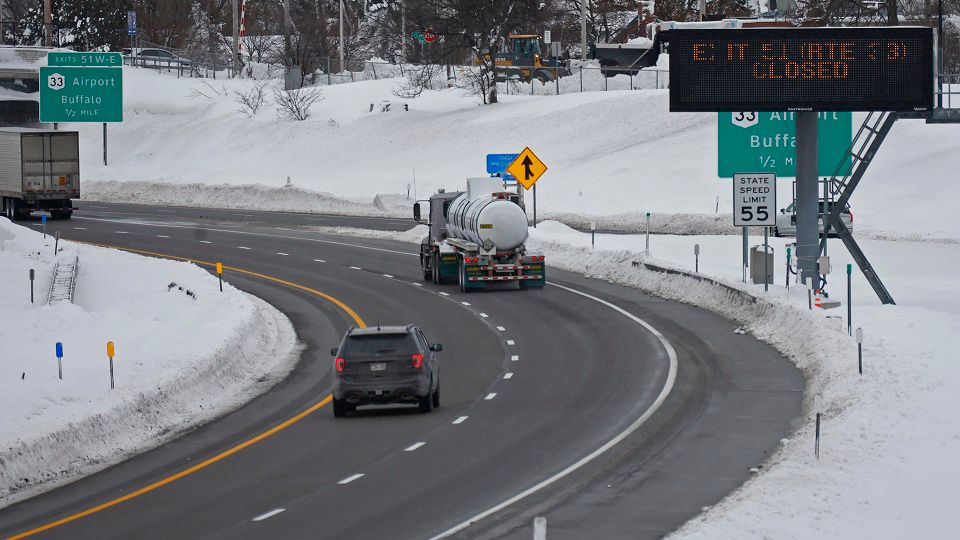Increasing tolls on the New York State Thruway should be a last option for the Thruway Authority, state Comptroller Tom DiNapoli determined in a report issued Friday.
The report urges the authority to improve is operations and try to maximize revenue that comes from sources other than tolls first before putting an increase into effect.
The Thurway Authority board last year set in motion the process for the first toll increase for E-Z Pass customers since 2010. If given final approval, tolls could increase for E-Z Pass tagholders by 5% in 2024 and an additional 5% in 2027.
The board is also trying to encourage more drivers to adopt E-Z Pass by increasing tolls on non-users by 75%. Tolls are also expected to increase for the Mario Cuomo Bridge, the replacement for the Tappan Zee Bridge that connects Westchester and Rockland counties.
“The Thruway Authority’s toll increase proposal comes at a time of extraordinary challenges for New Yorkers who are faced with rising costs for everything from food to shelter to gas,” DiNapoli said. “The Thruway should be more transparent with the public and disclose critical information, and identify and put in place all possible cost-savings and alternative revenue actions to minimize costs to drivers. Raising tolls should be the last option, and the Thruway has more work to do.”
DiNapoli's report came after Assemblyman Angelo Santabarbara urged the comptroller's office to take up a review of the toll increase. In a statement, the lawmaker called for the board to withdraw consideration of the toll increase.
“Just as past audits of the Thruway Authority found consistent issues with the Thruway Authority’s spending practices and lack of long-term financial planning, this report is no different — which is the first since the conversion to cashless tolling was completed,” Santabarbara said. “The report confirms that the conversion to cashless tolling was expected to serve as a long-term cost-saving measure that would eventually be passed down to drivers — but that hasn’t happened. Instead, 1,100 jobs were eliminated and now the Authority decides to hit us with a toll hike at the worst possible time—while families are being hit hard by inflation and already struggling with the rising costs.”
The report found Thruway finances have been affected by the implementation of a cashless tolling system and a tolls-by-mail system. The change has not yet produced savings or efficiencies, the report found.
There has also been a decline in traffic and subsequently toll revenue due to the pandemic. The construction of the $3.8 billion Mario Cuomo Bridge have also added to capital costs.
DiNapoli suggested the authority resolve the issues with cashless toll and perform a comprehensive assessment of operating needs and expenses on the system.
Federal funding and non-toll revenue sources should be "maximized" before committing to a toll hike as well. And DiNapoli urged the authority to disclose a capital needs assessment in order to justify cost estimates.
In a statement, Thruway Authority spokeswoman Jennifer Givner said revenue for the system was is user-based, not spported by federal, state or local tax revenue.
Meanwhile, revenues are expected to decline.
"Thruway toll revenues are projected to decline $240 million [over 2020- 2025] from levels prior to COVID. The Authority did not receive any portion of the funds New York received as part of the federal Infrastructure Investment and Jobs Act nor any funds from other COVID Relief programs. The annual growth rate for Thruway operating budgets averaged less than two percent increases over the 2010 - 2022 period," Givner said. "Our toll revenue continues to go directly toward making the Thruway one of the safest highways in the nation. The toll adjustment proposal announced in December [when it takes effect] would be the first in 14 years for NY E-ZPass customers outside of the Mario Cuomo Bridge and toll rates on the Thruway will continue to be some of the lowest in the nation. We believe this modest proposal will begin to raise additional revenue to support the long-term financial needs of New York’s main transportation corridor and engine for economic activity. We would be happy to discuss this with the Office of the State Comptroller at any time.”



